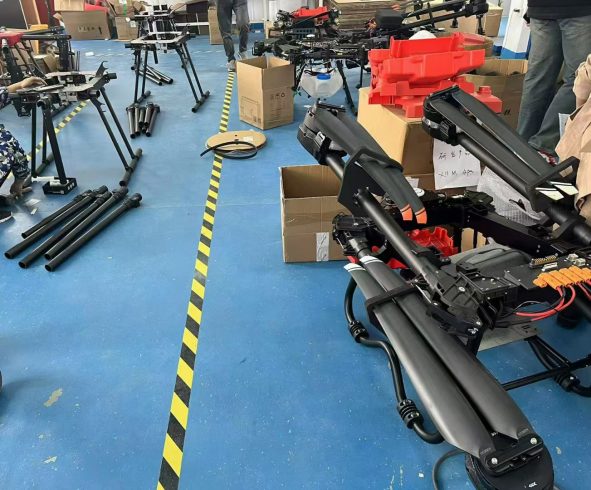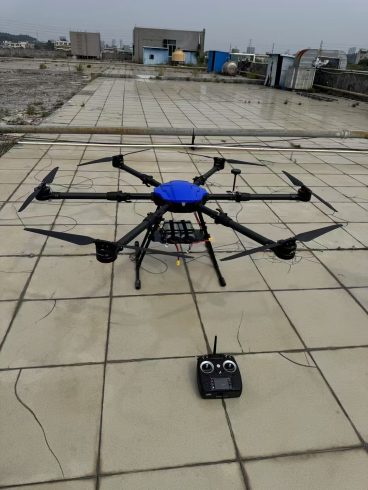![图片[1]-Drone Spraying vs Manual Spraying: Which Method Wins for Modern Farming?-msoen](https://www.msoen.com/wp-content/uploads/2025/04/0f937885e9184642-1024x849.jpg)
The age-old practice of manual crop spraying is being challenged by drone technology, sparking debates among farmers about efficiency, cost, and sustainability. As agriculture evolves, understanding the pros and cons of each method is critical for optimizing yields and resources. This article compares drone spraying and manual spraying across key metrics—precision, cost, safety, and environmental impact—to help farmers make informed decisions.
- Precision & Accuracy Drone Spraying: Surgical Targeting
- AI-Powered Precision: Drones use multispectral sensors and machine learning to detect pest infestations, nutrient gaps, or disease hotspots. They spray only affected areas, reducing chemical use by 40–70%.
- Uniform Coverage: Ultrasonic nozzles adjust droplet size (30–500 microns) based on wind and humidity, achieving 95%+ coverage accuracy.
- Data-Driven Insights: Post-spray NDVI maps verify application quality and track crop recovery. Manual Spraying: Hit-or-Miss Approach
- Human Error: Uneven walking speed or nozzle handling leads to over- or under-spraying, wasting chemicals.
- Blind Spots: Steep slopes, wet fields, or dense crops often go untreated.
- No Analytics: Lack of post-spray data makes it hard to measure effectiveness.
Verdict: Drones win for precision, especially in large or complex fields.
- Cost Efficiency Drone Spraying: Higher Initial Cost, Long-Term Savings
- Upfront Investment: Drones cost $3,000–$25,000, depending on payload and features.
- Operational Savings:
- Labor: 1 operator replaces 5–10 workers, cutting costs by 60–80%.
- Chemicals: Targeted spraying saves $20–$50/acre.
- Fuel: Electric drones use 90% less energy than tractor sprayers.
- ROI: Most farms break even within 12–18 months. Manual Spraying: Low Entry, Hidden Costs
- Low Initial Cost: Backpack sprayers start at $50.
- High Operational Costs:
- Labor: Requires 2–5 workers per 100 acres.
- Chemical Waste: Over-spraying increases expenses by 30–50%.
- Equipment Wear: Frequent pump repairs and replacements.
Verdict: Drones are more cost-effective for medium to large farms (>50 acres).
- Safety & Health Drone Spraying: Minimized Risks
- No Exposure: Operators control drones remotely, avoiding direct contact with chemicals.
- Terrain Safety: No risk of slips, falls, or tractor rollovers on steep slopes.
- Smart Alerts: Drones auto-abort missions in high winds or rain. Manual Spraying: High Health Hazards
- Chemical Exposure: Workers face respiratory issues, skin burns, or long-term toxicity.
- Physical Strain: Carrying 20L+ sprayers for hours causes fatigue and injuries.
- Accidents: 23% of farm injuries involve chemical handling (OSHA).
Verdict: Drones are safer for workers and communities.
- Environmental Impact Drone Spraying: Eco-Friendly Innovation
- Reduced Runoff: Precision application lowers chemical leaching into waterways by 80% (University of California study).
- Lower Emissions: Drones emit 95% less CO₂ than diesel-powered sprayers.
- Biodiversity Protection: Avoids non-target spraying that harms pollinators. Manual Spraying: Ecological Risks
- Over-Application: Excess chemicals contaminate soil and water.
- Fuel Pollution: Tractor sprayers emit 4.6 kg CO₂ per acre.
- Soil Compaction: Heavy machinery degrades soil structure.
Verdict: Drones support sustainable farming goals.
- Scalability & Adaptability Drone Spraying: Versatile for All Farm Sizes
- Small Farms: 5L drones treat specialty crops like strawberries or herbs.
- Large Estates: Swarm technology covers 1,000+ acres/day.
- Adaptability: Spray pesticides, liquid fertilizers, or bio-stimulants. Manual Spraying: Limited Scope
- Labor-Intensive: Impractical for farms larger than 50 acres.
- Crop Restrictions: Difficult to treat tall crops (e.g., corn) or flooded fields.
Verdict: Drones scale seamlessly with farm growth.
- Challenges of Each Method Drone Spraying
- Regulatory Hurdles: FAA/EASA licensing and airspace restrictions.
- Technical Learning Curve: Training required for flight planning and data analysis.
- Battery Limits: 20–30 minutes per flight; swappable batteries solve this. Manual Spraying
- Weather Dependency: Rain or wind halts operations.
- Labor Shortages: Finding workers for seasonal spraying is increasingly difficult.
- Inconsistent Results: Human error leads to patchy treatment.
Case Study: Rice Farm in Vietnam
- Manual Spraying (2022): 10 workers spent 5 days spraying 50 acres. Chemical costs: $2,500.
- Drone Spraying (2023): 1 operator covered the same area in 1 day. Chemical costs: $1,200.
- Outcome: 52% cost reduction + 15% yield boost due to even coverage.
Future Trends
- AI Swarms: Autonomous drone fleets managed by a single operator.
- Nano-Drones: Ultra-precise spraying for greenhouses or vertical farms.
- Blockchain Tracking: Verify organic compliance and carbon credits.
Conclusion: The Clear Winner for Modern Farms
While manual spraying may suffice for tiny plots, drone spraying delivers unmatched precision, savings, and sustainability for most operations. As labor costs rise and environmental regulations tighten, adopting drone technology isn’t just smart—it’s essential for future-proofing your farm.
Ready to Make the Switch?
➔ Download Our Free Guide: “Transitioning to Drone Spraying: A Step-by-Step Plan.”
➔ Calculate Your Savings: Use our interactive ROI calculator.











暂无评论内容